Can you really make microbially active aerated compost tea with a tiny aquarium air pump? What about using off-grid methods? We did the experimenting for you—here’s what we discovered!
How to Make Aerated Compost Tea: Which Method Works Best?
There’s a consensus in the organic gardening world that aerobic compost tea yields healthier plants, more nutrient-dense soil, and a better harvest. But when I researched the best method to make aerobic compost tea (also known as aerated compost tea or ACT), the consensus seemed to crumble.
I came across numerous recommendations for different methods and amounts of aeration—mostly involving tiny air pumps designed for small (5–10 gallon) aquariums. That got me thinking: How much aeration do you actually need to make microbially active aerated compost tea?
You May Also Enjoy:
“Composting the SCARY Stuff—Meat, Dairy, Bones, and Human Waste!”
“Small-Space Vermiculture, Step-by-Step”
“Sheet Mulching: Build Soil, Thwart Weeds, and Make Your Garden Fertile”
For example, do I need the $325 “jet engine” aeration system that one website said was essential for proper bacterial growth? Could my $40 pond air pump grow aerobic bacteria in my compost tea? Or maybe it is actually possible to get enough aeration from that $10 aquarium air pump, as so many ACT websites and blog posts claim.
Alternately, for those who live off-grid, are there methods of creating aerated compost tea without using an air pump at all?
I decided to find out.
Key Takeaways
Before I explain my method for doing so, which is admittedly a pretty long read, I want to provide you with the highlights of the process, as well as my conclusion. Then, if you want to learn more about aerated compost tea and how I came to this conclusion, I encourage you to keep reading.
- Key Takeaways:
- Aerobic bacteria, along with some good fungi, make up the beneficial ingredients in aerated compost tea.
- Cold water traps more oxygen than warm water, so make your compost tea in the shade, out of direct sunlight, and preferably in a cool place if you have one available.
- Smell is not a reliable way to determine the microbial biomass of a brewed compost tea. A sweet, earthy smell can result from using a sweet catalyst like molasses … without indicating any bacterial growth whatsoever.
- With the correct aerated compost tea kit, you can produce microbially active compost tea with almost any aeration method if you are diligent to aerate the tea with regular frequency and stop after 24 hours.
- Products Tested: The Soil Makers Compost Tea Blend; KIS Organics Compost Tea Brewing Kits; Xtreme Gardening Tea Brews
- Methods Tested: TetraPond APK100 Pond Air Pump, Tetra Whisper Air Pump for Aquariums up to 10 Gallons, Cordless-Drill Method, Cup-Pour Method
- Our Recommendation: Xtreme Gardening Tea Brews produced compost tea with the highest microbial activity by far—regardless of method used. No other product we tested produced aerated compost tea with more than a marginal bioload.
- Conclusion: You can produce microbially active aerated compost tea with any of the above methods—even with the cup-pour method if you’re off-grid—as long as you start with the right product.
Now, let’s take a quick look at what aerated compost tea is and how it benefits plants.
What Is Aerated Compost Tea?
For those who don’t yet know this, aerated compost tea adds living microorganisms and nutrients to soil, which then help soil and plants in a variety of really beneficial ways. In this case, we are aiming to add aerobic bacteria—or bacteria that require oxygen to live—to our soil, as opposed to anaerobic bacteria, which is less desirable, mainly due to the possibility of contamination with human pathogens.
Aerobic bacteria, along with some good fungi, make up the beneficial ingredients in aerated compost tea.
This process, known in various circles as “strengthening” or “revitalizing” the soil, basically helps to reduce the amount of fertilizer plants need, and can help plants utilize nutrients more easily. This strengthening is achieved by first “brewing” the ACT by aerating a mixture of compost and water, and then adding it directly to the soil by watering with it or spraying it.
My experiment, which I’ll detail below, focused on “brewing” the compost tea in the first place.
What Is Aeration?
Aeration in water is the process of breaking the water’s surface to allow trapped gasses—primarily carbon dioxide—to escape, which allows oxygen to replace it in the water. In aquatic circles, this is known as the “gas exchange.” Anyone who has kept tropical fish in an aquarium (not including Bettas, which breathe air from the surface) is familiar with the process to some degree.
You May Also Enjoy:
“Special Challenges to Managing NPK in the Organic Garden”
Some form of aeration is required to cause the gas exchange and allow oxygen into the water to keep the aerobic compost bacteria alive—hence the name “aerated compost tea.”
Aerated compost tea is made by adding compost ingredients to water and then aerating the water. Aeration ensures there is oxygen in the water, so that the bacteria stays alive while they consume a supplied food source and reproduce.
Determining the Best Low-Cost Method for Creating Aerated Compost Tea
So, how much aeration do you really need to make microbially active aerated compost tea? To find out, I set up an experiment using four 5-gallon buckets with lids, a variety of bags to contain the compost, and four different methods for aeration, as well as an organic compost tea blend from The Soil Makers and store-bought molasses. The molasses acts as a catalyst, or bacteria food.
(Note: Some ACT recipes call for adding fish emulsion. Turns out that in spite of having kept aquariums for more than 40 years, including professionally, I’ve never once emulsified a fish. Pass.)
I measured the suggested amount of compost soil into my mesh bags; added cold, unchlorinated water to four 5-gallon buckets; mixed in molasses; and began aerating for 36 hours—the recommended time in the instructions from the compost tea mix provider.
Four Different Aeration Methods
For my test, I used four different aeration methods, including two different electrically driven air pumps: one very strong pond air pump with dual air outputs and golf-ball sized air stones, and one much less expensive 10-gallon air pump with a normal aquarium air stone. (I weighted the aquarium stone down with fender washers from a hardware store so it would sink. A rock tied to it would have served the same purpose.)
I aerated the other two buckets mechanically. In one, I stirred the mixture rapidly with a cordless drill outfitted with a beater from a hand mixer. In the other, I used the “off-grid” method of scooping up water from the bucket with a cup and pouring it back into the bucket to break the surface to enable the gas exchange.
You May Also Enjoy:
“Extreme Composting: Say Goodbye to Landfills and Hello to Soil Fertility”
“Why You Should Add Clay to Your Compost Pile”
“5 Inexpensive, Simple Solutions For Small-Space Composting”
I decided to try these last two methods based on an event years ago, when I kept a fully stocked, 125-gallon aquarium of fish alive during a three-week-long power outage after a hurricane on the Gulf Coast. I did so by stirring the surface of the water thoroughly with a cordless drill outfitted with a beater from a hand mixer and set on high speed.
An owner of an aquarium store told me I couldn’t have done this—that I must have failed in spite of my fish still being alive—because the only way to create the gas exchange is to pour water from a height to break the surface. So, I decided to try both methods alongside my air pumps.
The First Round of Experiments: The Sweet Smell of…?

Does a sweet smell mean compost tea is microbially active?
In my 5-gallon buckets, I mixed the molasses in cold water, added my compost tea bags and aeration, covered the buckets with lids with holes I drilled in them like a child’s bug-catching jar, and started my timer for 36 hours.
Cold water traps more oxygen than warm water, so I suggest that you make your compost tea in the shade, out of direct sunlight, and preferably in a cool place if you have one available.
For my 2 air-pump buckets, I ran the air hoses through the holes I drilled in the bucket lids. For the cordless-drill bucket, I agitated the surface on high speed for 2 minutes every 4 to 6 hours. For the cup-pour bucket, I used a 24-ounce cup to scoop water from the bucket and poured it back in from a height of roughly 4 feet. I did this 25 times every 4 to 6 hours. I chose these numbers—2 minutes, 4 feet, every 4 to 6 hours—through the very scientific process of deciding on them arbitrarily. The 24-ounce cup is what I had on hand. My experiment was up and running!
Beware the Splash Zone
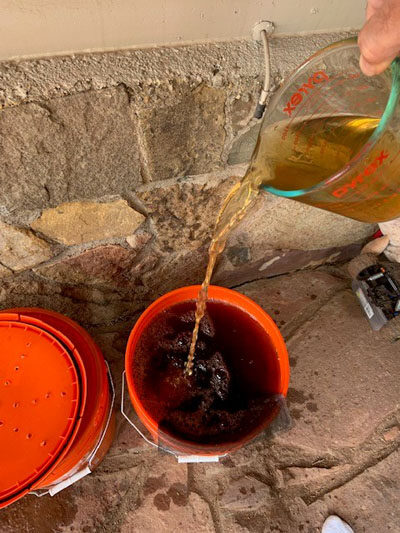
Can you make microbially active compost tea without electricity?
I need to make a note here about the cordless-drill and cup-pour methods. These methods create a large splash zone, the cup-pour method especially.
I would not recommend attempting either of these methods indoors. Once, while pouring the ACT back into the bucket, an enormous droplet erupted from the surface and landed right at the point in the corner of my mouth where my lips come together.
The first 2 words which came to mind were, “worm castings.” The next several words which came to mind, I’ll leave to your imagination.
How Reliable Is That Earthy Aroma, Really?
At the end of 36 hours, I was ready to check my results. I read on a website that the mark of successful aerated compost tea is a slightly sweet, earthy smell. Failure would manifest as a rank, anaerobic smell. From my days working in the aquarium industry, that is a smell I know only too well.
You May Also Enjoy:
“Sheet Mulching: Build Soil, Thwart Weeds, and Make Your Garden Fertile”
Think about stepping into deep, sucking, oozing mud in the bottom of a stagnant pond and then pulling your foot back out, hopefully with your shoe still on. That stench (of the gray-black, oily muck, not your foot) is the mark of failure here.
By that measure, my results were a resounding success. All four smelled sweet and earthy. Only the cup-pour bucket had even the slightest aroma of funk, and that dissipated when I poured the water in again.
I had done it! But then I read another article that asked the very good question, “How do you know that your aerobic compost tea actually packs that ‘microbial punch’?”
Well, it turns out that a sweet, earthy smell can come from the molasses and compost mix … without having any bacterial growth whatsoever.
So now, I honestly had no idea if any of my buckets actually had living aerobic bacteria in them. I was back to square one.
How to Test for Biological Load
I started looking for soil labs that test for the biological load (bioload) of active bacteria in soil, and it turns out there aren’t many. Quite a few labs will test for soil health and will recommend amendments, even for growing specific plants. But testing for bioload? Not so much. It is true that variables such as shipping time, heat, oxygen, etc., make the idea of consistently testing soils for living bacteria in distant labs challenging, if not impossible.
You May Also Enjoy:
“35+ Powerful, Inexpensive Organic Fertilizers You Can DIY”
“Homemade Fertilizers—15 Simple and Inexpensive Options”
“Aerobic Compost Tea, Worm Tea, and Leachate—A Clarification”
However, it also turns out that a company named microBIOMETER makes a test kit that works extremely well. It comes with 10 individual tests, and each test ends up costing a fraction of what it costs to get a soil sample tested at a lab, including preparation and shipment. Even better, the kit has methods for testing biological loads and fungi ratios not only of soils, but also of compost teas and compost extracts.
I purchased my kit through the incredibly knowledgeable and helpful soil folks at Rocky Mountain Bio Ag—whom I highly recommend working with if you ever get the chance.
It was time to redo the tests, this time with an accurate method for testing bioload at the ready.
The Second Set of Experiments: Disappointing Data
I burned through too much of my compost tea mix during my first 4 experiments to be able to conduct all 4 over again, so I had to purchase more. This time I bought ready-made, pre-bagged organic compost tea kits, each with their own catalyst provided, from KIS Organics—a company that claims to successfully test the results of its compost tea kits for biological load. (This is the same company that recommends—and sells—the $325 aeration system, to which you’ll also need to add your own 55-gallon barrel.)
You May Also Enjoy:
“5 Inexpensive, Simple Solutions For Small-Space Composting”
“6 Organic Nitrogen Fertilizers for Healthier Soil”
“Make Peace With Your Poop (and Then Make Compost With It!)”
I repeated my 4 experiments for 36 hours—with the 2 air pumps, the cordless drill, and the cup-pour methods.
The contents of each bucket smelled sweet and earthy, so I excitedly tested my results … and came up with a big bunch of nothing. Seriously, the results showed almost no bacterial growth whatsoever. The absolute bottom of the chart.
Hello? Hello? Is This Test Kit Working?What had gone wrong? I had 6 MicroBIOMETER test kits left, and enough of the compost from my first experiment left over to try 2 more experiments, so I set up two buckets and tried again—this time only with air pumps. Again, nothing. What’s the deal? Was it the compost tea products failing, or did the test kit not work?
I called the manufacturer of the test kit, microBIOMETER, and found them to provide very good customer service, though they had no real suggestion for how I could “calibrate” my test kit, for lack of a better word. I asked how to prove that the test kit was working and they didn’t have many suggestions.
They did provide the excellent information that for aerated compost tea, I should want a result of 20–50 micrograms of carbon per milliliter of sample (written 20-50 µg C/ml).
That was to be a huge help later on, but I still was faced with the problem of proving that the test kit worked. Up to this point, my best result was with the pre-packaged compost tea kit and the cordless drill, which produced 12.4 µg C/ml. All other samples ranged from 6-8 µg C/ml.
Going Local
During my phone call with microBIOMETER, I thought of a possible solution. We have an excellent hydroponics shop here in town, and I knew that if anyone could provide me with soil or compost tea or something with guaranteed living bacteria in it, it would be them. This proved to be the right idea.
These folks were not only helpful, but also extremely interested in my results. I explained my experiment and lack of results, and off we went on a storewide search for the ideal biologically active product to test to verify that the MicroBIOMETER test kit was working. They settled on a concentrated “compost extract.”
You May Also Enjoy:
“How to Make Fish Emulsion Fertilizer”
“A Simple Fertilizer From the Greek Gods” (Fertilize with Beer and Milk)”
“Jump-Start Your Compost With These 5 Free, DIY Compost Activators”
I ran a test right there in the store and, WOW, 110µg C/ml. This was a factor of almost 10 compared to my best result with the aerated compost tea kits. The test kit works.
Unfortunately, that means both of the aerated compost tea products I tried previously did not.
(Full disclosure: I let the people at KIS Organics know that I did not get good results with their product, and they chalked it up to me not using a strong enough air pump. The most powerful aeration system I used—the TetraPond APK100 Air Pump (about $40 at the time of publication)—aerates 1.67 gallons of liquid per minute. The air pump KIS Organics sells and recommends aerates 6.3 gallons per minute. The KIS Organics Compost Tea Brewing Kits have a lot of good reviews, so it’s possible that the product creates compost tea with a fantastic microbial load if you can invest $325 in KIS’s “jet engine” aeration system + the cost of a 55-gallon bucket. But this is an article for the rest of us—those of us who want to be able to make effective ACT inexpensively—so unless you are able to shell out some serious cash on an aeration system and need to make 55 gallons of compost tea at a time, I cannot recommend their product.)
The Goldilocks ACT Brewing Time: How Long Is Just Right?
The people at the hydroponics store and I spoke at length about the elapsed time for “brewing” compost tea, and they suggested that ACT peaks at 24 hours and then begins to die off. They suggested I run a test at 18, 24, and 36 hours.
Then they gave me two sample bags of yet another aerated compost tea product—Xtreme Gardening Tea Brews—also a ready-made kit with the compost in a pre-made pouch and a catalyst included. They felt fairly sure that this was a good product, and they’d certainly earned my confidence that they knew their business. I promised I’d let them know how it worked.
The Third Set of Experiments: The Compost You Use Matters
If you’ve been paying attention, you’ve noticed that at this point I only had 3 microBIOMETER test kits left. I decided to run 3 tests—one with the pond pump and full aeration, which I would test at 24 hours and then again at 36 hours, and one with my cordless-drill setup, which I would test at 24 hours.
If those didn’t work, I was prepared to give up on aerated compost tea.
Glad tidings of great joy, with my pond pump and full aeration, after 24 hours, the Xtreme Gardening Tea Brews kit produced ACT with 50.5 micrograms of carbon per milliliter. 50.5µg C/ml! That’s at the high end of what the folks at microBIOMETER told me to expect! What’s more, the batch with the cordless drill produced 34.5µg C/ml. That’s certainly acceptable ACT!
(During this trial, I was only able to run the cordless drill every 6 hours or so. I suspect that if I’d aerated more often, I’d have had better results.) After 12 more hours, the ACT with full aeration did indeed drop off, but only to 48.4µg C/ml. Still definitely usable.
Aeration With the Pond Pump and the Cordless Drill Worked! Now to Test for Off-Grid Use
Now that I had a proven ACT product, I really wanted to try the small air pump that most websites recommend again, as well as the cup-pour methods once more to see if people living off-grid could make this work, so I made some calls.
Serendipitously, the folks at my local hydroponics shop had 2 more of the sample packs of the ready-made ACT kits. Also, the folks at Rocky Mountain Bio Ag were willing to give me three more test kits for my microBIOMETER. These included three testing reagent powder packets, three indicator cards for use with the super cool testing app, and three plastic pipettes. I had test tubes left over. (See? I told you Rocky Mountain Bio Ag was awesome!)
In Summary: Good Results
It’s far too late to say “long story short,” but to sum up, after 24 hours, the small air pump produced ACT with a measurement of 55.1µg C/ml, and the cup-pour method produced a very acceptable tea of 45.8µg C/ml. These two teas I started in the evening, so the water remained colder for longer during the initial stages of the brew.
You May Also Enjoy:
I did pour the cup-pour once before bed, two hours after beginning the “brew,” and I did pour the cup-pour tea every 4 hours on the dot the next day. Based on the results from my first tests, I believe that if I’d used the same technique with the cordless drill, my results would have been even better.
So, what I discovered is that with the correct aerated compost tea kit—Xtreme Gardening Compost Tea Brews—you can produce really active compost tea with almost any aeration method if you are diligent to aerate the tea with regular frequency and stop after 24 hours. But I also learned that if you don’t get the tea used at 24 hours, it’s not the end of the world—36 hours is okay, too.
And I’m happy to report that you can be successful with an inexpensive air pump for a 10-gallon aquarium, a cordless drill fitted with a hand-mixer beater, or even a good-sized cup.
This article ran quite a bit longer than I planned, but then again, so did the experiments. I was just going to set up four buckets, aerate them differently, and smell them at the end. Little did I know what I was getting into.
Still, if you’re looking for low-cost (and even off-grid) ways to brew microbially active aerated compost tea, I think you’ll agree that the information in this article will help you achieve healthier plants, nutrient-dense soil, and better harvests. And that’s a consensus I can live with!
What Do You Think?
What’s your favorite way to make aerated compost tea? Share your best tips in the comments below!
You May Also Be Interested In:
- Are you at stage 3? Learn the 7 stages of becoming a Medicine Woman or Medicine Man.
- Free e-Book: “Garlic: Your First Home Medicine”
- Free e-Book: “Top 10 Immune-Boosting Herbs”
- How to make Fire Cider (a.k.a. Four Thieves Tonic)
- Fight your next infection NATURALLY. “Treating Infections Without Antibiotics”
- Your teeth can heal themselves! “Alternatives to Dentists”
- Boost your immune system and fight off colds! Make your own elderberry syrup.
- Free e-Book: “The Ancient Art of Raw Vinegars”
- The #1 way to improve your health is to kick the sugar habit. Our free 7 Day Sugar Challenge can help!
__________________
The Grow Network is a participant in the Amazon Services LLC Associates Program, an affiliate program designed to provide a means for our team to earn fees for recommending our favorite products! We may earn a small commission, at no additional cost to you, should you purchase an item after clicking one of our links. Thanks for supporting TGN!

Through a lifetime of construction and home repair, David Porter developed the skills he uses to keep the buildings and equipment on his homestead running smoothly.
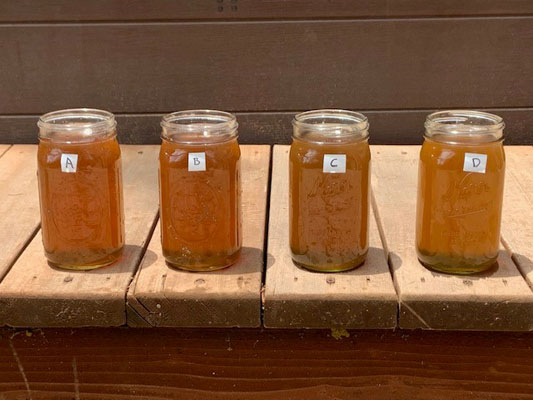
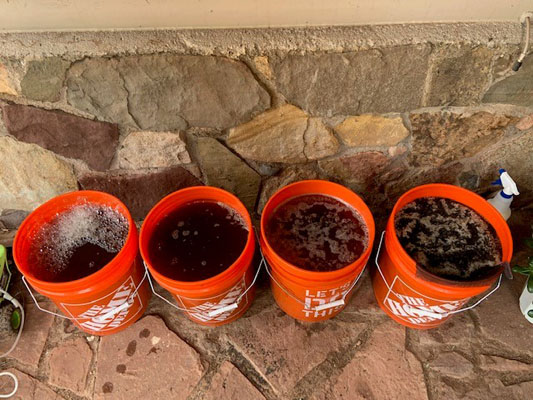
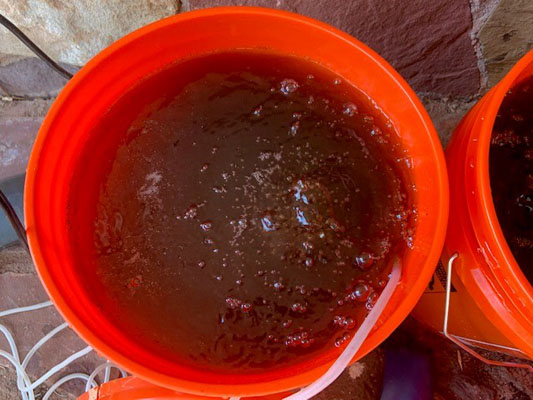
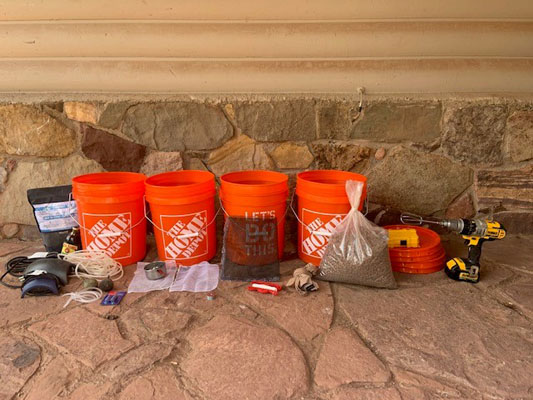
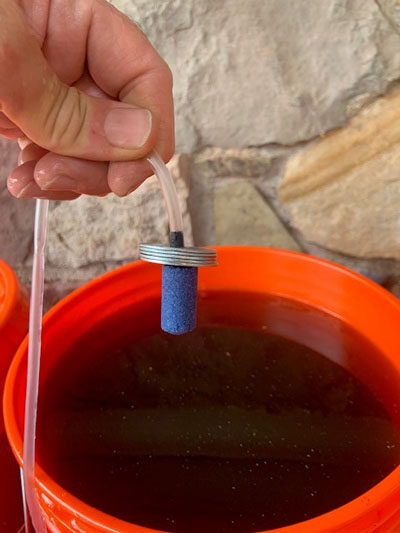
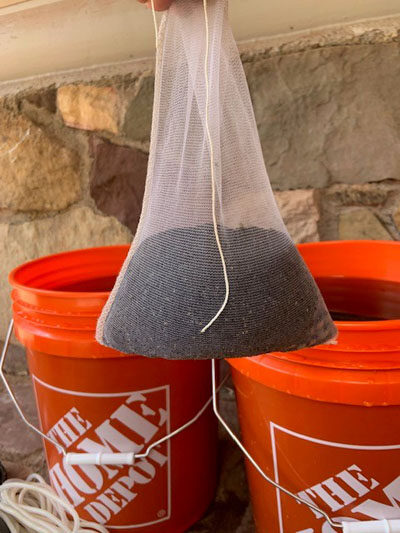

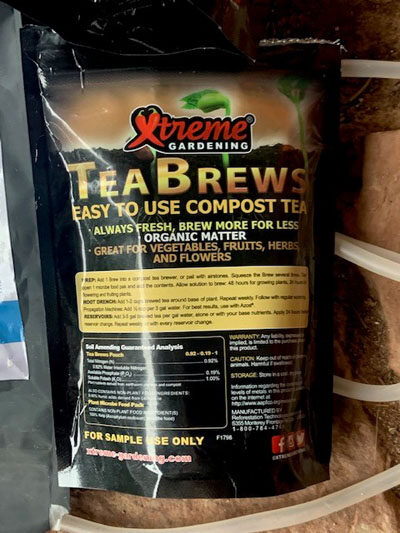
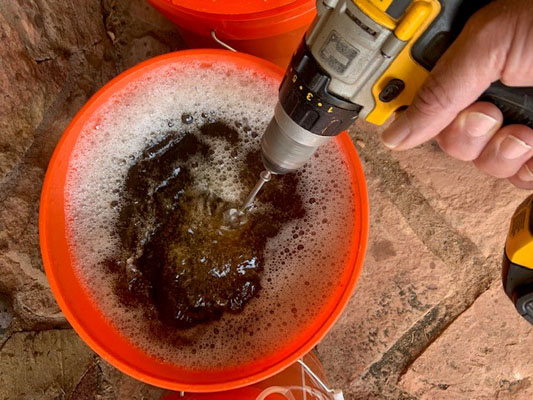







COMMENTS(2)
How successful do you think I’d be if I used my own compost rather than purchase a kit?
Awesome experiments and write-up, thank you! Do you think homemade compost would work at least as well as a kit?